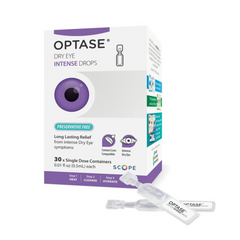In our digitally-driven world, screens have become an integral part of our daily lives. Whether it’s work, communication, entertainment, or education, we are constantly engaging with screens, be it smartphones, computers, tablets, or televisions. While the convenience and opportunities offered by technology are undeniable, the increasing amount of time we spend staring at screens raises concerns about its impact on our eye health.
The Rise of Digital Eye Strain: The term “digital eye strain” or “computer vision syndrome” has gained prominence as screens have become more ubiquitous. This phenomenon refers to a range of discomforting symptoms that result from prolonged screen exposure. Symptoms can include dry eyes, blurry vision, headaches, eye fatigue, and even neck and shoulder pain. The constant need to focus on screens and the prolonged exposure to blue light emitted by these devices contribute significantly to these issues.
Blue Light’s Role: One of the major concerns regarding screen time is the exposure to blue light, a high-energy visible (HEV) light that screens emit. Blue light is present naturally in sunlight and helps regulate our circadian rhythm, but excessive exposure from screens, especially during the evening, can disrupt sleep patterns and strain the eyes. Long-term exposure to blue light has been linked to an increased risk of age-related macular degeneration (AMD), a leading cause of vision loss.
Children and Screen Time: Children today are growing up in a digital age, and their exposure to screens starts at an early age. Excessive screen time during childhood has raised concerns among experts, as young eyes are still developing. Prolonged screen exposure can impact visual development, leading to issues like myopia (nearsightedness). Encouraging outdoor activities and incorporating the 20–20–20 rule (taking a 20-second break to look at something 20 feet away every 20 minutes of screen time) can help mitigate these risks.
Mitigating the Impact: Fortunately, there are several steps individuals can take to minimize the impact of screen time on their eye health:
1. Follow the 20–20–20 Rule: Remembering to take regular breaks and focus on something distant can help reduce eye strain.
2. Adjust Display Settings: Most screens offer options to adjust brightness, contrast, and font size. Optimize these settings to suit your comfort.
3. Blink Regularly: Staring at screens often leads to reduced blinking, causing dry eyes. Make a conscious effort to blink regularly to keep your eyes moist.
4. Use Blue Light Filters: Many devices now come with blue light filter settings. These filters reduce the amount of blue light emitted, helping to alleviate strain and improve sleep quality.
5. Incorporate Daily Eye Care Into Your Selfcare Routine: Ensure you are giving your eyes the DAILY protection they need. The myze DigiCare+ Routine provides powerful anti-oxidants, blue light blocker supplementation and preservative-free lubrication to help protect your eyes.
6. Positioning and Lighting: Ensure proper screen positioning to minimize glare and reflections. Adequate ambient lighting also reduces eye strain.
7. Regular Eye Exams: Routine eye check-ups are crucial to detect and address any issues early on. An optometrist can recommend personalized solutions based on your needs.
8. Limit Screen Time Before Bed: Aim to reduce screen exposure at least an hour before bedtime to allow your body’s natural sleep cycle to function optimally.
In Conclusion: The impact of screen time on eye health is a real concern in our digital age. While screens have revolutionized our lives in many positive ways, it’s essential to strike a balance between their use and the well-being of our eyes. By practicing mindful screen habits, incorporating regular breaks, having a daily eyecare routine and seeking professional advice when needed, we can mitigate the potential risks and enjoy the benefits of technology without compromising our precious vision.





